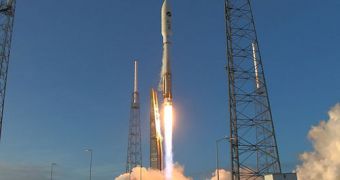The second flight of the X-37B unmanned spaceplane is going on better than anyone expected, officials at the United States Air Force (USAF) and the Boeing Company announce. Just a few days ago, the spacecraft exceeded the maximum amount of space time experts built it to withstand.
The X-37B specifications sheet shows that the spacecraft was developed to endure in Earth's orbit for as many as 270 days, the most extensive capability of any vehicle that is not the International Space Station (ISS).
The Orbital Test Vehicle 2 (OTV-2) mission has just exceeded these 270 days, and is currently heading into a prolonged mission. Some space experts believe that the USAF may be testing to see just how much of a beating the vehicle can take before it fails.
OTV-2 launched atop an Atlas V delivery system on March 5, from Space Launch Complex 41 (SLC-41) at the Cape Canaveral Air Force Station (CCAFS), in Florida. Takeoff occurred about 4 months after the first X-37B – OTV-1 – successfully completed its maiden voyage.
Officials at the USAF are keeping mum on when the spacecraft lands in California. They have been keeping quiet on the mission's progress ever since they took over the X-37B project, providing only small updates to the media.
However, there are some things that can safely be assumed from the current situation, such as for example the fact that this spacecraft design was significantly greater capabilities than even its designers believe.
Another thing the Air Force is keeping under wraps is the type of payloads the spaceplane is carrying. Some believe that it may have been developing as a surveillance and espionage asset. Its cargo bays can be easily fitted with cameras, radars and other equipment.
This line of reasoning is not unknown to foreign powers, such as China. Members of the Asian nation's press have repeatedly stated that the Americans are trying to begin an arms race in space. What China plans to do about this is currently unknown.
The very nature of X-37B's mission is enough to arouse suspicions among other nations. Space has traditionally been left largely untouched by arms races, and everyone is intent on keeping it this way.
The Boeing spacecraft is a lot smaller than a space shuttle, for instance, but the company announced plans to develop a larger version of the vehicle. It could be that NASA astronauts could make their way to ISS in such vehicles, Universe Today reports.

 14 DAY TRIAL //
14 DAY TRIAL //